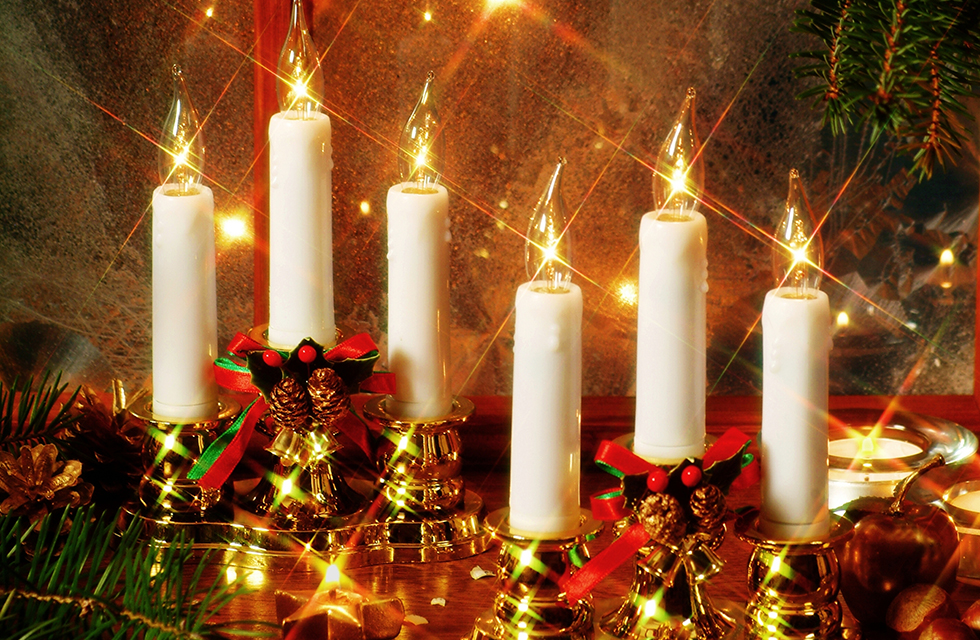Be Fire Smart this Holiday Season - Decorate with Safety in Mind

The Christmas holiday season is upon us. While Christmas trees and decorations add to the holiday spirit, they pose a fire and injury risk to many, especially children. During this time of the year, many families begin their quest in search of the perfect Christmas tree immediately following the Thanksgiving Holiday. According to the National Fire Protection Association (NFPA), Christmas trees are a major source of fuel in a fire. The longer a Christmas tree remains in the home it becomes drier and increasingly flammable, becoming a fire hazard. Nearly one-third (33 percent) of U.S. home fires involving Christmas trees occur in January.
Safety Tips - Christmas Trees
Natural trees always involve some risk of fire. To minimize the risk:
- Always get a fresh tree and keep it watered.
- Do not put the tree within 3 feet of a heat source, i.e., fireplace, space heater, radiator, candles, heat vents or lights.
- Never use lit candles to decorate the tree.
- Always turn off Christmas tree lights before leaving home or going to bed.
- Do not burn tree branches, treated wood or wrapping paper in a home fireplace.
- Remove your tree after Christmas or when it is dry. Dried-out trees are a fire danger and should not be left in the home, garage or placed outside up against the home.
Safety Tips - Holiday Lights & Decorative Lighting
Holiday lights and decorative lighting add a festive touch during the holiday season; yet approximately two out of five (44 percent) of home Christmas tree fires are caused by electrical distribution or lighting equipment.
- Use lights that are UL approved; some lights are for outdoor use, and some are for indoor use.
- Replace lights that are worn, have broken cords or loose bulb connections.
- Read the manufacturer’s instructions on the number of strand lights to connect.
- Decorative fires are often started due to a form of heat source such as a candle or equipment that was too close to something that could burn. Twenty percent of decorative fires were too close to a heat source.
- More than one-third (33 percent) of home decoration fires are started by candles. During the month of December, this increased to almost half (46 percent).
- Christmas is the peak day for candle fires.
Safety Tips - Holiday Decorations
The Fire Marshal’s Office recommends not using candles as a holiday decoration but use battery operated candles as a substitute for real candles; however, should you choose to use real candles, please take the following precautions:
- Place candles in a sturdy metal, glass, or ceramic holder.
- Keep candles at least 12 inches from anything that burns.
- Never leave a candle unattended.
- Blow out candles after use and before going to bed.
- Never leave a lit tree or other decorative lighting displays unattended.
- Turn off all decorations before leaving the house or going to bed.
- Inspect and replace lights with exposed or frayed wires, loose connections, and broken sockets.
- Do not overload extension cords or outlets.
- Do not run an electrical cord under a rug.
Be sure to decorate with children in mind.
- Do not put ornaments that have small parts or metal hooks, or look like food or candy, on the lower branches where small children can reach them.
- Keep the number of the National Poison Center, 800-222-1222, near each phone.
- Trim protruding branches at or below a child’s eye level and keep lights out of reach.
Decorative Holiday Plants – Toxic or Non-Toxic
Holiday plants such as Mistletoe, Holly, Amaryllis, Lilies, Daffodils, Cyclamen, Coleus, Jerusalem Cherry, English Ivy, Yew, Christmas Rose, Poinsettias, and some varieties of Pine may enliven a room but may be harmful to humans and/or pets as an irritant that can cause various symptoms of discomfort and illness or for some even death. When displaying these types of plants, place them in locations that can be admired from a distance but inaccessible to children and pets.
The Prince William County Fire & Rescue System would like to remind residents that holidays were designed for memorable moments spent with family and friends and not visits to the emergency room. Make your holiday a cherished and memorable holiday by preparing and implementing proper precautions.
For more information regarding holiday safety, visit the National Fire Protection Association www.nfpa.org and the U.S. Fire Administration www.usfa.fema.gov/.